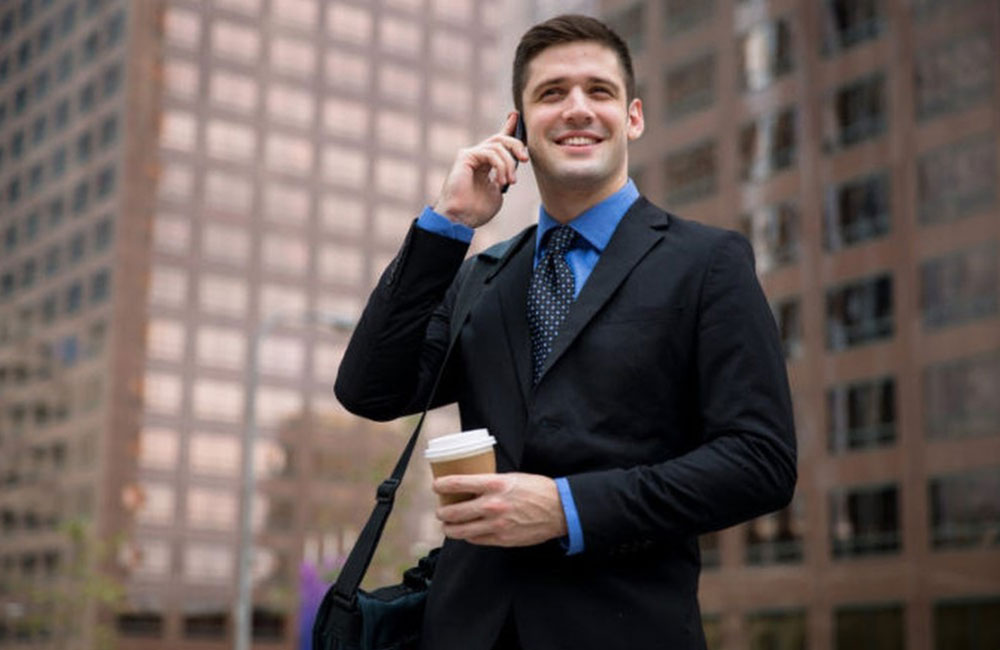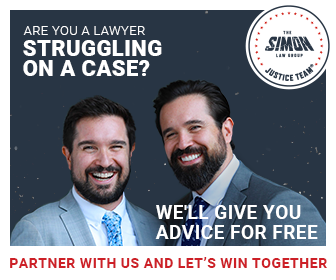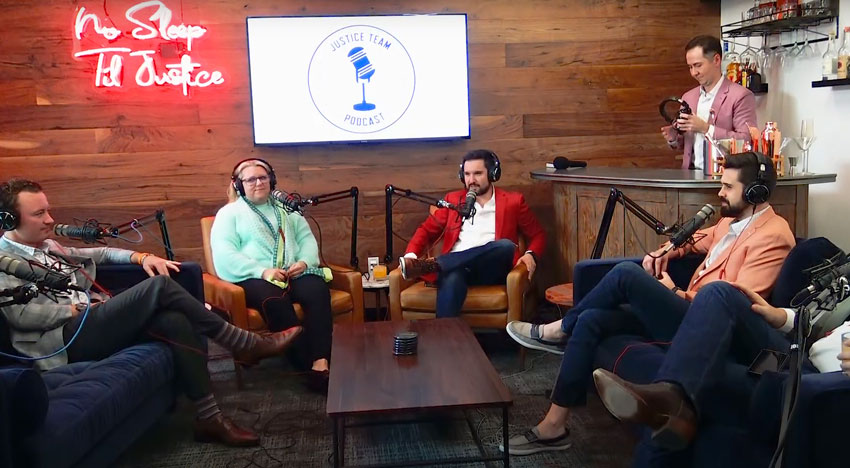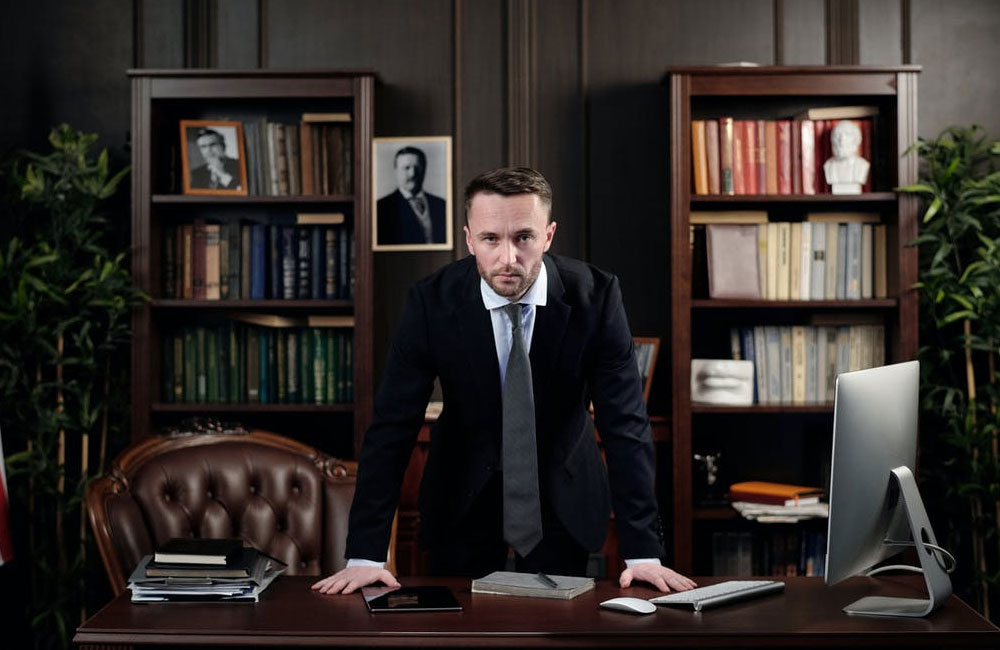By Brooke Bove, Esq.
When the plaintiff first contacted his lawyers, little was known other than that he suffered a traumatic brain injury on the premises of a large hotel while visiting Orange County. He was found after dark, unconscious, in the driveway of a valet-only parking garage at the hotel. No one saw how he got there or what happened. The plaintiff had no memory of the incident and, whatever it was, it happened out of view of all hotel surveillance cameras.
The plaintiff was rushed to an emergency room and underwent emergency brain surgery. It was a terrible and serious injury, but what actually happened? Even now, after (spoiler alert!) resolution of the case on the courthouse steps, no one really knows. But this is the story of how a law firm built a successful case against the hotel and the valet parking company with an amnesiac client, circumstantial evidence, and sheer willpower.
Investigation / Hotel Incident Report
At the top of the page, under the title of “Incident Report” it says: “Guest Fall (Intoxicated Guest).” The defendants’ stance from the beginning was that the plaintiff passed out drunk and hit his head on the way down.
The “intoxicated guest” description is significant because it establishes the hotel’s dismissive attitude about the plaintiff from the beginning – he’s a drunk, he just needs to go sober up, he deserves what happened to him, he does not need medical attention, he is not really injured, etc. And the incident report is the first place the defendants tried to frame the incident and distance themselves from potential liability.
The report narrative states that a valet supervisor found the plaintiff and when security arrived they smelled alcohol – “a strong odor,” of course. He was breathing normally and there was blood on the back of his head. There was also some blood on the front of his shirt, and a small wound on “his tongue, lip or nose.” They managed to get him into a seated position, but he was unable to stand. He was able to at least partially spell his name, but he then “fell asleep.” No one figured out that he was a guest until hotel staff, who had his phone, saw a text from his wife about room service.
Once the text came in, they suddenly realized they should determine his room number and alert his wife. By the time his wife came down, the plaintiff was “still sleeping, loudly snoring.” The plaintiff’s wife told them to call for an ambulance, which arrived four minutes later.
The most interesting part of the incident report was the injury diagram completed by the hotel security officer who first responded to the scene. It shows a large area on the back of the plaintiff’s head was injured – an abrasion with inflammation. But he also indicated injury to the “Base of nose (philtrum),” as well as his upper lip and tip of tongue. Why
would he use that word? Philtrum is very specific, which legitimizes the presence of blood and injury to his face.
Though the Incident Report does not come to this conclusion, the location of his injury gives the biggest hint as to what could have happened. The plaintiff was found on the ground in the exit lane of a parking garage that could only be accessed by valet attendants. Guests cannot drive in and out of the garage, nor can visitors or anyone from the general public. The most obvious conclusion was that the plaintiff was hit by a vehicle, and it had to
have been driven by a valet attendant.
Of course, defendants did not take this stance and argued that other things could have
caused his injuries: He could have been assaulted, he could have had a seizure, or he could have just been drunk and fallen down and hit his head.
The Alcohol Factor
Hospital records confirm the presence of alcohol in the plaintiff’s system. In fact, his blood alcohol concentration (BAC) was .147. It sounds high, but so what if he was drinking? He was not driving. He was on vacation. He was staying in a hotel. He’s allowed to have a good time. Also, regardless of the BAC, what was his actual level of impairment? Was he impaired enough that he passed out in the middle of the road? That he tripped and fell? That he got into a fight?
We know what the Incident Report said, but a responding paramedic testified that though the plaintiff’s wife told him the plaintiff had been drinking, he did not recall smelling alcohol, and there was no indication the plaintiff was heavily intoxicated. His wife and sister-in-law who had been with him that evening testified he did not appear to be intoxicated.
No treating doctor or expert testified that alcohol consumption contributed to his brain injury or that the injury was worse or exacerbated by the level of alcohol. So why should it matter? We thought we could minimize the impact of the alcohol factor at trial. But after listening to hours of focus group deliberations, we found that it was the most significant factor in their minds. That number stuck with them, and many could not get past it to think about liability. Comparative negligence was going to be a huge factor.
Surveillance Video
In discovery, we received all surveillance footage of the hotel for the 24 hours before and after the injury. The footage was of poor quality, and it was not even really video. It was a series of still shots taken every two to three seconds. So, one frame might have a person in one spot, and the next frame might have the same person all the way on the other side of the screen with no indication of what happened between those two frames. A person could even go into and out of the camera’s frame for a second or two and not be recorded at all.
The hotel is a large property and we had to sort through all of it to track the plaintiff’s movements through multiple cameras and views. In particular, on the night of the incident, we tracked his movements from his hotel room, down the elevator, through the hallway, and out the door. We were able to track the vehicles that were going in and out of the valet parking garage from the front door of the hotel to the garage entrance, and through three different camera views inside the garage – including one where employees and valet attendants could take an elevator back up to the hotel.
We were able to follow him the whole time, except that he was missing for approximately
five minutes. It was during those five minutes that he was injured – between approximately 9:35 p.m. and 9:40 p.m. Cross-checking images from the other cameras, we found that only one vehicle entered the garage during that time period: a black SUV with a roof rack, driving without headlights.
There was one camera inside the parking garage looking out that might have given us a clear view of what happened. Unfortunately, the picture is extremely dark and almost nothing is visible from that angle. During the day, you can see well enough from that camera, but when it is dark, the contrast makes it impossible to detect what is happening in the area where the plaintiff was found. If this had been an episode of CSI, we could have had the images perfectly enhanced and the mystery would have been solved.
Unfortunately, this was real life and, while technology is good, it was not quite good enough for that.
We tracked the plaintiff’s movements through the hotel earlier in the day as well. The plaintiff went to that area outside the parking garage to smoke more than once. During the day we saw footage of him standing, and sometimes sitting, on the corner of that sidewalk, smoking, talking on his phone, and checking emails. There were times he steps off the sidewalk and right into the garage entrance. This leads to an assumption or inference that on the night of the incident he was doing something similar in the same spot. We know from phone records he was not talking on the phone at night, but he could easily have been checking emails or using apps.
Finally, we had testimony from a valet parking attendant that he saw the plaintiff standing in that spot just a few minutes before he was found injured.
Ultimately, we came to the conclusion, with our experts’ help, that without headlights, there would be no warning to the plaintiff that a car was coming from behind him to enter the garage. Also, driving without headlights makes it very difficult for the valet driver to see anything in his path – including a pedestrian. Put together with other circumstantial evidence,
we can conclude that the black SUV hit the plaintiff, and he was thrown to the exit side of the garage, hitting his head and losing consciousness.
As far as comparative negligence was concerned, defense was too focused on proving that the plaintiff was a sloppy drunk to really seize the opportunity to argue that plaintiff potentially stepped off the curb into the path of an oncoming vehicle.
Emergency Response
Despite an obvious head wound, and inability to respond, no hotel employee or valet attendant thought to call an ambulance until the plaintiff’s wife arrived on the scene and insisted upon it. And when they did, they took their sweet time about it. They had radios and everyone had cell phones, but someone walked all the way across the hotel to ask someone else to make the call. The 911 call was made 28 minutes after the plaintiff was first discovered with an obvious head wound. Paramedics arrived within four minutes and
began administering treatment.
Incidentally, it is the hotel’s policy to call 911 whenever someone suffers a head injury, but somehow that did not happen in this case – mainly because they thought the plaintiff was merely drunk.
Plaintiff’s Injuries
The plaintiff suffered multiple traumatic injuries including, but not
limited to:
Cranial Injuries
- scalp hematoma
- laceration/abrasion
- skull fracture
- frontal intracerebral hematoma
- acute subdural
- hematoma with associated areas of post-traumatic subarachnoid hemorrhage
- hydrocephalus
- neuro-cognitive sequelae secondary to severe closed head injury.
Visual Injuries
- blurred vision
- lack of depth perception
- others usually associated with traumatic head injuries, including subarachnoid hemorrhage and other intracranial bleeding and compression.
Left Knee Injuries
He also suffered at least a partial tear of the anterior cruciate ligament (ACL), as well as a meniscal tear in his left knee.
Facial Injuries
He suffered cuts or abrasions to the base of his nose (the philtrum!), and the tip of his tongue, and broken teeth.
Internal Injuries
There was evidence that he suffered a hematoma or contusion
on his spleen.
Psychological / Emotional Injuries
He was diagnosed with post-traumatic stress disorder (PTSD) manifesting in bouts of high anxiety, including panic attacks triggered whenever he sees an SUV with a roof rack.
Expert Opinions
We consulted many experts in this case, but most important were the opinions of two medical experts, one of whom was a neuro-surgeon with significant experience in injury biomechanics. Based on all the testimony in the case, the medical records and treatment, and multiple evaluations of the plaintiff, these two experts offered the following opinions:
Defendant argued that plaintiff was injured because he fell down while wandering around drunk and hit his head. To counter this, plaintiff’s expert testified and submitted a declaration stating: The “constellation of injuries” the plaintiff sustained “is incompatible clinically and biomechanically with a simple standing fall.”
First, there is a specific amount of force needed to cause the plaintiff’s brain injuries, and that force cannot be achieved by a fall from a standing position unless the plaintiff falls, stiff as a board, without anything to slow down or break his fall. If he went rigid and fell to the ground as if he were a pencil unable to balance on its point, then there could potentially be enough force to cause his brain injuries. It is unlikely he fell that way though.
That is not how people fall. They crumple, they fall on their butts, they hit an elbow, or something else breaks the fall. Any of those would have reduced the force when he finally did hit his head. He hit the back of his head hardest, so he couldn’t have tripped forward, which would supply some additional force. The only other way to get enough force to cause his brain injury would be if he was hit and propelled backward.
Second, the plaintiff’s facial injuries, when considered in conjunction with the injuries to the back of his head and the brain injuries, are inconsistent with a simple, standing fall. You don’t hit your face and the back of your head in the same fall.
A more plausible explanation is a double impact scenario, wherein a frontal collision
occurred (causing the facial injuries) which then propelled him backward, with force, at which time he struck the back of his head.
Further, an injury to either the ACL or the meniscus cartilage, or both, is inconsistent with a simple standing fall, because there would be no impact or rotational force to cause the injury. The double impact scenario could account for his knee injuries, because whatever frontal collision occurred could also have impacted his knee and caused his knee injuries.
Even without a direct impact on the knee, the frontal collision could have resulted in the rotational forces required to cause an ACL tear as well as the damage to his meniscus.
Plaintiff’s second theory of liability was that the delay in getting medical treatment for the plaintiff contributed to or exacerbated his brain injury. This is much more difficult to prove, because no doctor would testify to a reasonable degree of medical certainty that the delay absolutely made it worse, and no one could determine how much worse it was because of the delay. However, our expert did give an opinion on the issue which was very helpful at the summary judgment phase and when it came time to resolve the case.
The “goose egg” on the back of his head, as well as the abrasions, blood, slurred speech and later inability to speak, the inability to move on his own, the snoring, and the lack of response to stimuli are all signs and symptoms of that brain injury, and all were observed by security and other personnel at the hotel. They had the ability and opportunity to call for emergency medical intervention immediately upon discovering him, but instead, a half-hour elapsed before they called 911, resulting in a delay of treatment. During that time, he
suffered a measurable decline in alertness and consciousness, which is in itself further evidence of steadily increasing intracranial brain compression.
No one expects valet attendants and security personnel to know all the signs of a traumatic brain injury, but they knew enough to know that the plaintiff had a head injury and that they should have called 911.
The paramedics testified that his symptoms were such that a lay person would know he had a head injury and was not just “sleeping.” When the paramedics arrived they gave him a Glasgow Coma Scale score of 3 – the lowest score possible. He was fully in a deep coma.
The sooner a victim of a subdural hematoma and traumatic brain injury gets medical treatment, including surgical intervention to relieve the brain compression, the higher the likelihood that the victim will not only survive, he will be less likely to suffer permanent brain injury. On the other hand, the longer the brain compression goes unrelieved by surgical intervention (depriving it of blood supply leading to oxygen deprivation), the higher the likelihood he will suffer permanent loss of brain functionality, and even death.
The delay in medical treatment caused by the hotel’s failure to immediately call 911 (as required by their own policy) contributed to the severity of the plaintiff’s brain injury. With a shorter time between injury and medical intervention, the plaintiff would likely have suffered less intracranial bleeding, which would have meant less brain compression.
It would have allowed more blood flow to the brain and less oxygen deprivation, he would likely have suffered less damage to his brain, and his recovery period would likely have been shorter.
General Damages
Before the incident, the plaintiff was a brilliant business man – by the time he was 40 he had built and sold a successful business and was living a semi-retired life. He had a consulting firm and worked when he wanted to. His opinions and insight are still sought on a regular basis by businessmen all around the world. He assisted in running a mayoral campaign.
He counts executives, doctors, politicians and other community leaders in his inner circle of friends. Since the incident, he is no longer able to run his consulting firm. He can no longer serve on the boards of companies and institutions as he had done previously.
He and his wife also created and oversaw a non-profit organization they started after the death of their grandson. It was a cause near and dear to them and they cannot do what they were able to previously. His wife, likewise, was involved in many community projects, and philanthropic activities. She was a wish-granter for the Make a Wish
Foundation for many years. She has now given up a lot of that work to take care of her husband. This injury caused them both to lose their purpose in life. The plaintiff has often said that his brain is his currency. The daily limitations he now suffers include the inability to choose words, the inability to concentrate and focus, the inability to process information, and the inability to make those basic mental connections that most of us take for granted.
Additionally, the injuries to his frontal lobe have altered his personality, which make things difficult for both him and his wife. There are also physical cognitive deficiencies that he suffers. His motor skills are impaired, making it difficult for him to get around. He uses a cane when walking, and lately has even resorted to using a walker. All the time he spent in a bed recovering and all the time he now spends sitting have caused him serious back pain.
He has endured multiple brain surgeries. He had a portion of his frontal lobe removed because it was damaged beyond repair. He has a shunt inserted in his brain that drains his spinal fluid into his stomach because the brain is not able to perform that function on its own any more. He has trouble getting around and performing his own activities of daily living. He cannot cook or clean, he cannot shower alone, and he often cannot get himself up and to the bathroom in time. Therefore, it is necessary for him to have round-the-clock attendant care.
Additionally, he and his wife have always been adventurous. For example, they have done a lot of big game fishing – winning prizes and setting records. Obviously, that was all over for them after the plaintiff’s injury. The plaintiff cannot even climb a flight of stairs without help. There is no way he can go out on a fishing boat and wrangle with a marlin. His wife’s life consists almost exclusively of managing his care and medical appointments, and her days of big game fishing are done as well. But I am afraid of making him seem too pathetic. He is a brilliant man – operating at 70% of his former brain capacity puts him about equal with the average citizen. So when you speak with him, it is not easy to believe he suffered such a traumatic, debilitating injury. A jury might have seen him sitting in the courtroom and thought that he didn’t seem too hurt. Additionally, he was wealthy and successful, and those are prejudices we would have to address with a jury as well.
The MSJ
There were two defendants: the hotel and the valet parking company operating on site. The hotel was the only defendant which filed a summary judgment motion. The motion was framed in terms of causes of action, as plaintiff had alleged general negligence and premises liability. The issue for both was causation: (1) even if duty and breach are established, plaintiff cannot prove that something the hotel did (or did not do) caused his injuries; and (2) there is no dangerous condition of property which caused his injuries.
For some reason, the hotel did not distance itself from the valet parking company in its motion. Ultimately, we believe they likely would have lost on the agency issue, but it is a close call. My favorite part of the defendant’s motion is where the hotel admits to a triable issue of material fact on the first page of the introduction, by stating the plaintiff’s testimony and the hotel’s emphatic disagreement. It became easy to argue that not only has the defendant failed to shift the burden to plaintiff, it has highlighted the most obvious triable issue of material fact on the front page.
In our opposition, we asserted two theories of liability against the hotel: (1) the valet parking company is the agent of the hotel and when the plaintiff was hit by a valet-driven vehicle, the hotel is vicariously liable; and (2) the hotel staff’s delay in obtaining medical treatment significantly contributed to the severity of plaintiff’s brain injury.
The Agency Argument
Although the hotel and the valet company have an agreement that the valet company would provide car parking services at the hotel, in and of itself this agreement is not proof that the valet company is an independent contractor. Agency is defined by California Civil Code section 2295, et seq., and the crucial factor in determining whether an agency exists is the level of control each entity has over the situation – if the principal has the right of control and supervision, there is an agency relationship even if that right is not exercised. (Malloy v. Fong (1951) 37 Cal.2d 356, 370.)
Valet parking is a service offered by the hotel to guests and visitors, and one in which visitors and guests are obliged to partake. There is no self-parking at the hotel. The parking garage is clearly marked to state that only valet-driven cars may enter. The garage is on hotel property, and in fact is connected to the hotel building itself. When a guest or patron drives up to the front doors of the hotel, there are valet drivers waiting to take the
keys and vehicles from the individual. No one who visits the hotel would have any way of knowing that the valet drivers are paid by another entity.
Additionally, the issue of agency may be implied from circumstances and the conduct of the parties. (Michelson v. Hamada (1994) 29 Cal.App.4th 1566, 1579.) Further, if there is control over the results of the work to be performed and the means of performance, agency can be established. (White v. Uniroyal, Inc. (1984) 155 Cal.App.3d 1, 25.) It is also
possible to be an agent and an independent contractor at the same time. (City of
Los Angeles v. Meyers Brothers Parking System (1975) 54 Cal.App.3d 135, 138.)
In this case, the hotel controlled the means by which the valet company was to perform its responsibilities. The hotel not only told them where to park guest vehicles, it provided the property and facilities in which to do so. The agreement states that the hotel must approve the number of parking attendants reasonably necessary to perform the work. Further, the hotel has the power to send any parking attendant home, to forbid any parking attendant from working on hotel property, and even to approve valet uniforms. The agreement forbids the valet company from displaying a sign with its name or logo. Valet charges appear on the hotel’s bills, which do not indicate the valet company’s name, and payment for valet charges is made directly to the hotel with the rest of the bill.
If, for purposes of argument, we embrace the fiction that the valet company is not a traditional agent of the hotel, it could still be an ostensible agent. “Agency is ostensible when the principal intentionally, or by want of ordinary care, causes a third person to believe another to be his agent who is not really employed by him.” (Civil Code, § 2300.) To establish ostensible agency, there must be evidence that the principal’s overt acts lead to a reasonable belief in the agent’s authority. (Lindsay-Field v. Friendly (1995) 36 Cal.App.4th 1728, 1734.)
The only real obstacle to establishing ostensible agency in this case was proving that the plaintiff was injured because he reasonably relied on his belief in that agency. (CACI No. 3709; see also Preis v. American Indemnity Co. (1990) 220 Cal.App.3d 752, 761.) This was
difficult to show in this case, mainly because the relationship between principal and agent here was so camouflaged and indistinguishable that no one would know there were even two separate entities.
All the plaintiff, or any other patron, knows is that there are valet services at the hotel – services that everyone is re-quired to use.
In opposition to the summary judgment motion, the plaintiff argued that he was injured when he was hit by a car driven by a parking attendant he reasonably believed was an employee or agent of the hotel. It follows that a reasonable jury could easily make a factual determination that the valet company was in fact an agent of the hotel – actual or ostensible. Consequently, the hotel could be held vicariously liable for the valet’s
actions, if those actions were committed within the scope of that agency relationship. (Perez v. Van Groningen & Sons, Inc. (1986) 41 Cal.3d 962, 967.) Driving vehicles into the parking garage for hotel patrons and guests was certainly within the scope and course of the valet company’s agency relationship with the hotel.
Any disagreement on the issue of agency is, of course, a triable issue of material fact necessitating the denial of the hotel’s motion.
Proving Plaintiff Was Hit By a Vehicle
One of the biggest arguments in the defendant’s motion was that because there are no eyewitnesses, the plaintiff cannot prove that the hotel was negligent. How could the plaintiff prove he was hit by a vehicle if no one saw it, it was not recorded by surveillance cameras, and there are no vehicle damage claims that might back him up? And what about the driver of the vehicle? Is he just going to hit a person with a vehicle and leave the scene and not tell anyone? But this line of argument completely ignores the enormous amount of circumstantial evidence. There are hit-and-run incidents quite often. And there are crimes committed where there were no eyewitnesses. If an eyewitness were required to prove guilt, there would not be a jail overcrowding problem in this country.
Circumstantial evidence is a perfectly acceptable way to explain to a jury the sequence of events and to prove a defendant was negligent. There is an entire jury instruction strictly related to “direct and indirect evidence” to explain to a jury that “[a]s far as the law is concerned, it makes no difference whether evidence is direct or indirect. You may choose to believe or disbelieve either kind.” (CACI No. 202; see also Evid. Code, §§ 410 and 600, subd. (b).)
“[T]he fact that evidence is ‘circumstantial’ does not mean that it cannot be ‘substantial.’ Relevant circumstantial evidence is admissible. Moreover, the jury is entitled to accept persuasive circumstantial evidence even where contradicted by direct testimony.” (Hasson v. Ford Motor Co. (1977) 19 Cal.3d 530, 548, revd. on other grounds.) Circumstantial evidence can provide the sole basis for a verdict and, in such a case, can meet the substantial evidence test on appeal. (Ibid.)
As noted above, the plaintiff’s expert used the “constellation of injuries” argument to establish a triable issue of material fact – the mixed bag of injuries he received is circumstantial evidence that he was hit by a vehicle. That, coupled with other evidence, allows a jury to infer that the hotel (by way of vicarious liability) is liable for plaintiff’s injuries.
Substantiating that argument is plaintiff’s PTSD diagnosis. His psychologist testified that the plaintiff was having panic attacks, and it had become apparent to both the plaintiff and his wife that these bouts of high anxiety happened whenever he saw an SUV with a roof rack, similar to the one that entered the parking garage during the time the plaintiff was absent from surveillance images. A person can be amnesic to a traumatic event (such as
being hit by an SUV), but the brain still remembers it on a “pre-conscious” level, which comes out in symptoms like the panic attacks which occur upon seeing an SUV with a roof rack.
Plaintiff’s Red Herring
At the time of the summary judgment opposition, we did not have all of the evidence from the surveillance cameras which we were eventually able to extract. (As noted, some of the surveillance images were of very poor quality.) What we did have was a photo still of a vehicle with a roof rack exiting the garage, with what looked like it could have been a person on the hood. We did not know if it was the right vehicle, and our video expert could not tell us if it was just light refraction or if it really was a bald head and person on the hood. But we hoped to use the frame to at least get past the summary judgment motion. It worked a little too well, because for the remainder of litigation, and even in mediation and settlement discussions, defendants were too stuck on that still frame to think carefully and seriously about our other theories, and the black SUV driving without headlights.
The Delay in Treatment
Our expert’s comments on that issue are laid out above, and were enough to overcome the summary judgement motion, creating a triable issue of fact on this issue. We were still concerned, though, that the expert opinions would not be enough to prove this at trial
should the jury decide against us when it came to the issue of agency. We were still concerned about ultimately losing the hotel as a defendant.
Resolution
When we attended the first media – tion, the plaintiff’s theories of liability
were:
(1) The valet company is liable because its employee hit the plaintiff with a black SUV, causing his facial and knee injuries and throwing his body back with enough force to cause his traumatic brain injuries;
(2) The hotel is liable because the valet company is its agent (actual or ostensible), and therefore it is liable for its agent’s acts and omissions; and,
(3) The hotel is liable because once the plaintiff was discovered, hotel employees negligently delayed in requesting medical assistance, which caused
additional and further injuries.
We asserted that the hotel not only has a duty to protect its guests and patrons from injury, but that it also had an affirmative duty to call 911 immediately, based on its “special relationship” with the plaintiff. (See Morris v. De La Torre (2005) 36 Cal.4th 260, 269, citing
Delgado v. Trax Bar & Grill (2005) 36 Cal.4th224, 237-38.) “Courts have found such a special relationship in cases involving the relationship between business proprietors such as shopping centers, restaurants, and bars, and their tenants, patrons, or invitees.” (Morris,
supra, 36 Cal.4th at p.269, quoting Delgado, supra, 36 Cal.4th at p. 235.)
The Supreme Court of California noted in Delgado that restaurant proprietors owe a special-relationship-based duty to provide “assistance [to] their customers who become ill or need medical attention and that they are liable if they fail to act’.” (Delgado, supra, 36 Cal.4th at p. 241.)
We argued that hotels are not different from restaurant owners in this respect. A “special relationship” exists between a business proprietor and not only its patrons or customers, but also its invitees. (Morris, supra, 36 Cal.4th 260, 271-72.) As guests of the hotel, the plaintiff and his wife were patrons, customers, and invitees. Moreover, placing a 911 call is a well-recognized and generally minimally burdensome method of seeking assistance for an injured guest. (Id. at p. 277.) The plaintiff was found on hotel property, and as such was entitled to help and attention from the hotel in the form of a quick phone call to paramedics.
The hotel was nervous enough about liability that they came to the first mediation ready to resolve the case. After an all-day mediation that exhausted and tested the limits of the plaintiff, we reached a confidential settlement agreement with the hotel.
But the valet parking company held on to the bitter end. We even had a second mediation at which they were still not prepared to offer a reasonable amount of money.
We entered the expert discovery phase, and they began to raise their offers, but still not enough. So we appeared ready for trial. We were assigned a courtroom and pre-trial motions were heard. We had a very long and very intense hearing regarding the many
motions in limine on each side. The motions that were most heated were those where each side was asking the court to limit or prevent expert testimony, which is a topic for another article. Ultimately, the court decided to defer its ruling on those until we were in trial and the issues were better understood by the court.
We were set to pick a jury, and we were literally in the courtroom assembling visual aids and setting up our technology when we received the phone call with an
offer the plaintiff could not refuse.
The Aftermath
This case was a battle at every level, but we were able to resolve it for a confidential amount with which the plaintiff and his wife were happy. We had another multi-front battle resolving liens with
Medicare and the plaintiff’s health insurance after settlement (which is also the subject of another article). But the battle was worth it. It’s worth it every time. As trial lawyers, we win some and we lose some. When we are in the trenches, it is sometimes hard to see the big picture – but the fight is what’s important. Keep on fighting!












